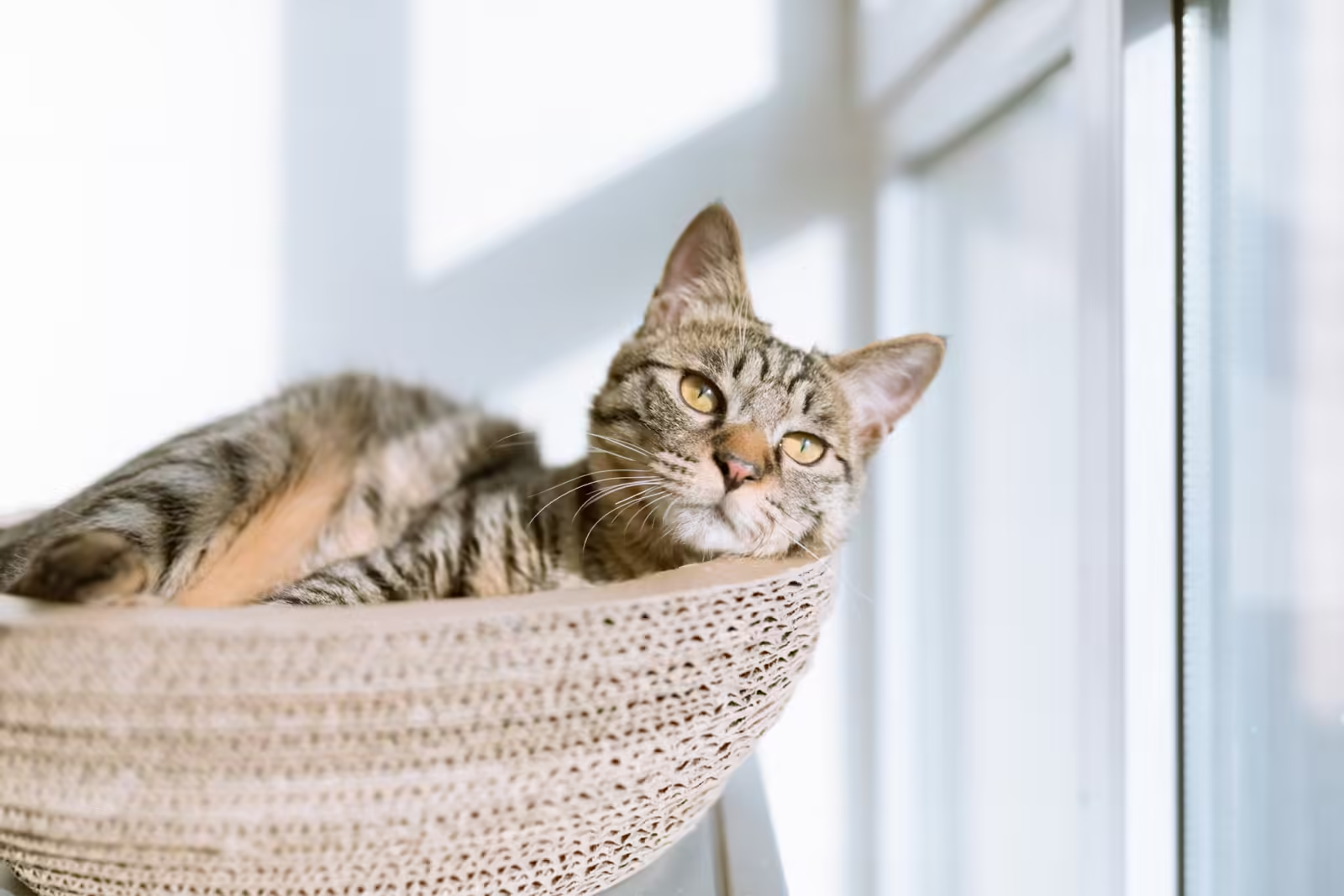How to Keep Your Indoor Cat Entertained and Active
Keeping an indoor cat entertained and active can be a rewarding challenge. Indoor cats may miss out on the natural stimulation of the outdoors, so it’s up to you to create an environment that mimics the excitement and exercise they would otherwise get. Here’s a comprehensive guide on how to keep your indoor cat happy, healthy, and engaged.
1. Interactive Toys
Interactive toys are essential for stimulating your cat’s mind and body. They come in various forms, including:
- Feather Wands: These toys mimic the movement of birds, triggering your cat’s hunting instincts.
- Laser Pointers: A classic choice that encourages your cat to chase and pounce. Ensure not to shine it directly in their eyes.
- Puzzle Feeders: These toys make your cat work for their food, providing both mental and physical exercise.
Tip: Rotate toys regularly to keep your cat’s interest piqued.
2. Cat Trees and Scratching Posts
Cat trees and scratching posts are more than just furniture—they’re vital for your cat’s physical health and mental well-being.
- Cat Trees: Provide vertical space for climbing and perching, which satisfies a cat’s instinctual need to climb and observe.
- Scratching Posts: Encourage scratching to maintain their claws and deter them from using your furniture.
Tip: Place cat trees and scratching posts in areas where your cat spends a lot of time.
3. Window Perches
Window perches offer your cat a view of the outside world, which can be highly stimulating.
- Bird Watching: Even if there’s no wildlife, the changing scenery can keep your cat entertained.
- Sunbathing Spot: Cats love to bask in the sun, and a window perch provides a cozy spot for this.
Tip: Ensure the perch is securely attached and has a comfortable pad.
4. Playtime and Training
Regular playtime is crucial for a cat’s physical and mental health. Incorporate play into your daily routine:
- Scheduled Play Sessions: Spend at least 15-20 minutes a day playing with your cat.
- Training Sessions: Teach your cat tricks or commands using treats as motivation. This mental stimulation can be as tiring as physical exercise.
Tip: Use positive reinforcement to encourage learning and keep sessions short and fun.
5. Environmental Enrichment
Enriching your cat’s environment can provide endless entertainment:
- Catnip: Many cats love catnip, which can be used in toys or sprinkled on scratching posts.
- New Scents: Introduce new smells with safe, cat-friendly herbs or scented toys.
- Cardboard Boxes: Simple and inexpensive, boxes can be turned into hiding spots, tunnels, or even makeshift furniture.
Tip: Keep things fresh by occasionally rearranging furniture or adding new items.
6. Automated Toys
Automated toys can keep your cat engaged when you’re not around:
- Battery-Operated Toys: Toys that move on their own can simulate prey and keep your cat active.
- Interactive Feeders: Devices that dispense treats or food at intervals can keep your cat occupied.
Tip: Ensure automated toys are safe and durable for unsupervised play.
7. Social Interaction
Cats need social interaction, whether it’s with you or other pets:
- Quality Time: Spend time petting and talking to your cat. This builds a strong bond and provides emotional stimulation.
- Play Dates: If you have more than one cat, supervised play sessions can provide social interaction and exercise.
Tip: Watch for signs of stress or aggression during interactions and adjust as needed.
8. Safe Outdoor Experiences
If possible, safely expose your cat to the outdoors:
- Catios: Enclosed outdoor spaces allow cats to experience nature while staying safe.
- Leash Training: Some cats can be trained to walk on a leash, offering a controlled way to explore outside.
Tip: Always supervise outdoor activities and ensure the environment is safe.
9. Regular Health Check-Ups
A healthy cat is a more active cat. Regular vet visits are essential:
- Routine Exams: Keep up with vaccinations, flea and tick prevention, and dental care.
- Monitor Weight: Ensure your cat is at a healthy weight to prevent obesity-related issues.
Tip: Discuss any behavioral changes with your vet, as they could indicate health problems.
10. Creating a Cat-Friendly Home
Finally, ensure your home is designed with your cat’s needs in mind:
- Hide Electrical Cords: Prevent chewing hazards by concealing cords and cables.
- Secure Toxic Plants: Keep poisonous plants out of reach.
- Comfortable Spaces: Provide cozy, quiet spots for rest and relaxation.











Leave a Reply